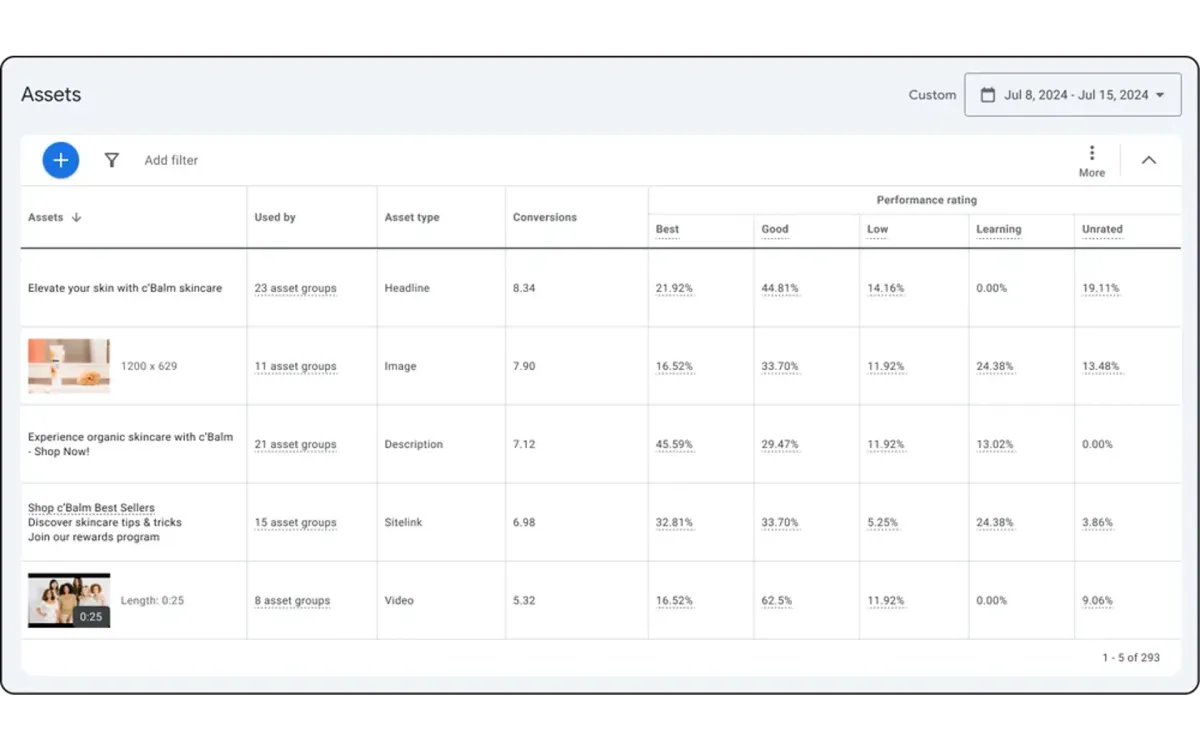
Google yesterday announced a significant expansion of its artificial intelligence-powered creative tools and reporting features for Google Ads. Ginny Marvin, Google's Ads Product Liaison, shared details of these updates on LinkedIn, highlighting new capabilities that aim to enhance advertisers' ability to create, edit, and analyze ad assets across various campaign types.
According to Marvin's post, one of the key developments is the extension of asset generation capabilities to App and Display campaigns. This expansion brings the AI-powered asset creation tools, previously available primarily in Performance Max campaigns, to a broader range of advertising formats. The move reflects Google's ongoing effort to integrate generative AI technologies across its advertising platform, potentially allowing advertisers to create a wider variety of ad creatives more efficiently.
In addition to expanding asset generation, Google has also enhanced its image editing capabilities. The new features, which are now available globally in English with plans to expand to more languages later this year, include the ability to add, remove, and replace objects within an image, as well as crop images to different aspect ratios. These tools, which leverage advanced AI algorithms, aim to provide advertisers with more flexibility in adapting their visual assets to different ad formats and campaign requirements without the need for extensive graphic design skills or external editing software.
The integration of these AI-powered creative tools across more campaign types represents a significant step in Google's efforts to streamline the ad creation process. By making these features available in App and Display campaigns, Google is potentially enabling a larger number of advertisers to benefit from AI-assisted creative development, which could lead to more diverse and tailored ad experiences for users across different platforms.
Another notable aspect of the announcement is the introduction of new reporting features for Performance Max campaigns. In response to advertiser feedback, Google is rolling out asset-level conversion reporting globally. This feature aims to provide advertisers with more granular insights into the performance of individual creative assets within their campaigns. By offering conversion metrics at the asset level, Google is enabling advertisers to better understand which specific elements of their ads are driving results, potentially informing more data-driven optimization strategies.
Furthermore, Google is introducing YouTube video placement reporting for Performance Max campaigns. This feature allows advertisers to review where their video ads are appearing on YouTube, addressing concerns about brand suitability. Advertisers now have the ability to exclude specific placements at the account level if they deem certain content inappropriate for their brand. This addition responds to growing demands for greater transparency and control over ad placements in programmatic advertising environments.
In a move to further enhance brand safety measures, Google has also made third-party verification capabilities available for YouTube and Display inventory within Performance Max campaigns. This feature allows advertisers to work with independent measurement partners to validate the brand suitability of their ad placements, providing an additional layer of assurance and control over where their ads appear.
The announcement also highlights Google's ongoing collaboration with third-party creative platforms. In addition to existing integrations with Canva, Smartly, and Pencil, Google has now partnered with Typeface, a generative AI platform for enterprise content creation. This integration allows Typeface users to import assets directly into Google Ads, streamlining the workflow between content creation and ad deployment. Typeface has also developed templates specifically designed for creating images and text in Performance Max campaigns, potentially helping advertisers align their creatives with campaign best practices more easily.
These updates come at a time when the digital advertising industry is increasingly turning to AI and machine learning technologies to improve campaign performance and efficiency. By expanding its suite of AI-powered tools and enhancing reporting capabilities, Google is positioning itself to meet the growing demand for more sophisticated, data-driven advertising solutions.
However, the increased reliance on AI for creative development and campaign optimization also raises questions about the role of human creativity and strategic thinking in advertising. As these tools become more prevalent, advertisers may need to adapt their skillsets and workflows to effectively leverage AI capabilities while still maintaining brand voice and creative vision.
The rollout of these features is likely to occur gradually over the coming weeks and months, with some capabilities already available and others set to be introduced in the near future. As advertisers begin to incorporate these new tools and reporting features into their campaigns, it will be interesting to observe how they impact overall ad performance, creative diversity, and the broader digital advertising landscape.
In conclusion, Google's latest updates to its advertising platform represent a significant step forward in the integration of AI technologies into digital marketing practices. By expanding creative tools, enhancing reporting capabilities, and strengthening brand safety measures, Google is aiming to provide advertisers with a more comprehensive and efficient toolkit for managing their digital ad campaigns across various formats and platforms.
Key facts about Google's new advertising features
Announced on July 30, 2024
Asset generation capabilities extended to App and Display campaigns
Enhanced image editing features including object addition, removal, and replacement
New asset-level conversion reporting for Performance Max campaigns
YouTube video placement reporting added to Performance Max
Third-party brand safety verification now available for YouTube and Display inventory in Performance Max
New integration with Typeface for asset creation and import
Global rollout of image editing tools in English, with more languages planned
Responds to advertiser feedback for more transparency and control
Aims to streamline ad creation and optimization processes through AI technologies

